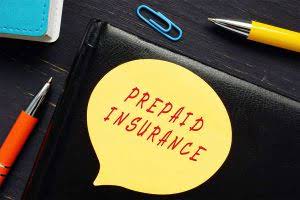Accounting Equation Definition
Content

It is also known as the Balance Sheet Equation & it forms the basis of the double-entry accounting system. To further illustrate the analysis of transactions and their effects on the basic accounting equation, we will analyze the activities of Metro Courier, Inc., a fictitious corporation. Refer to the chart of accounts illustrated in the previous section. Knowing how to calculate retained earnings helps business owners to perform a more in-depth financial analysis.
We will increase the expense account Salaries Expense and decrease the asset account Cash. The new corporation purchased new asset for $500 but will pay for them later.
Introduction To The Accounting Equation
By subtracting the costs of goods sold from revenues, you’ll determine your gross profit. Remember that your net income is made up of your total revenue minus your expenses. If you have high sales revenue but still have a low profit margin, it might be time to take Basic accounting equation a look at the figures making up your net income. Manage your business’s financesand evaluate your business transactions to determine whether they’re accurately reported. The company’s net income represents the balance after subtracting expenses from revenues.
Intuit Inc. does not warrant that the material contained herein will continue to be accurate nor that it is completely free of errors when published. Readers should verify statements before relying on them. Retained earningsrepresent the sum of all net income since business inception minus all cash dividends paid since inception. The ultimate goal of any business should be positive net income, which means your business is profitable. Retained earnings represent the sum of all net income since business inception minus all cash dividends paid since inception. As machinery is bought on credit, liability will increase by $2,000, while machinery or asset will increase by $2,000. Accounting equation explanation with examples, accountingcoach.com.
Accounting Topics
If you sold your assets for exactly what you paid for them and paid off the debt, equity is what you have left over. The balance sheet is one of the components of the financial statements, the key financial reports of a business, which we cover in a later chapter. The financial position of a business is shown in a special accounting report called the balance sheet, also known as the statement of financial position. If you have just started using the software, you may have entered beginning balances for the various accounts that do not balance under the accounting equation. The accounting software should flag this problem when you are entering the beginning balances, and require you to correct the problem.
- Land, buildings, fixtures & fittings, equipment, machinery all are classified as non-current assets.
- On January 1st, 2020, Sherry took out the money from her savings for $100,000 to start her skincare business.
- After the company formation, Speakers, Inc. needs to buy some equipment for installing speakers, so it purchases $20,000 of installation equipment from a manufacturer for cash.
- In this case, Speakers, Inc. uses its cash to buy another asset, so the asset account is decreased from the disbursement of cash and increased by the addition of installation equipment.
- Where the tightrope walker uses the pole to maintain balance, the accountant uses a basic mathematical equation that is called the accounting equation.
- The basic accounting equation is not a complete and accurate representation of a company’s performance.
For an interesting discussion on the history of accounting click here. If it doesn’t balance, you’ve got an error somewhere – this could be in your data entry so a review of your data is important. The equation should balance if you’re entered in your data correctly. Should have a corresponding entry on the credit side. Liabilities will decrease, since Accounts Payable is a liability. An expense will cause Owner’s (Stockholders’) Equity to decrease. Liabilities increase because Accounts Payable is a liability.
Similar To Accounting Equation
Assets including long-term assets, capital assets, investments and tangible assets. They were acquired by borrowing money from lenders, receiving cash from owners and shareholders or offering goods or services. The expanded accounting equation shows the various units of stockholder equity in greater detail. Owner’s draws and expenses (e.g., rent payments) decrease owner’s equity.

Total equity is how much of the company actually belongs to the owners. In other words, it’s the amount of money the owner has invested in his/her own company. Current liabilities are the current debts the business has incurred. Fixed costs are recurring, predictable costs that you must pay to conduct business. These costs can include insurance premiums, rent, employee salaries, bills, etc. Will be listed as shareholder’s equity on your balance sheet. The equation helps support the double-entry accounting system which indicates that every entry has an opposing credit entry.
What Is The Accounting Equation?
Knowing how to use equations in accounting can help you get a better understanding of your company’s financial situation. Regardless of your organization’s areas of activity, correctly tracking down assets and liabilities can have a direct impact on its success. Knowing how to use equations in accounting is a valuable skill, but it takes research and practice.

This transaction affects both sides of the accounting equation; both the left and right sides of the equation increase by +$250. Double entry is an accounting term stating that every financial transaction has equal and opposite effects in at least two different accounts. The double-entry practice ensures that the accounting equation always remains balanced, meaning that the left side value of the equation will always match the right side value. The accounting equation is a concise expression of the complex, expanded, and multi-item display of a balance sheet. Total assets will equal the sum of liabilities and total equity. It can be defined as the total number of dollars that a company would have left if it liquidated all of its assets and paid off all of its liabilities.
Accounting Formulas For Businesses
Accounting equation is also called balance sheet equation and fundamental accounting equation. Accumulated Other Comprehensive Income , AOCIL, is a component of shareholders’ equity besides contributed capital and retained earnings. In this expanded accounting equation, CC, the Contributed Capital or paid-in capital, represents Share Capital. Retained Earnings is Beginning Retained Earnings + Revenue – Expenses – Dividends – Stock Repurchases.
- Credits may be indented to indicate that they are on the right.
- The sale of ABC’s inventory also creates a sale and offsetting receivable.
- This is sometimes referred to as the company’s leverage.
- Being an inherently negative term, Michael is not thrilled with this description.
- The Accounting Equation is the primary accounting principle stating that a business’s total assets are equivalent to the sum of its liabilities & owner’s capital.
- The equation is generally written with liabilities appearing before owner’s equity because creditors usually have to be repaid before investors in a bankruptcy.
In order to understand the accounting equation, you have to understand its three parts. Good examples of assets are cash, land, buildings, equipment, and supplies. Money that is owed to a company by its customers, which is known as accounts receivable, is also an asset. The purchased office equipment will increase Assets by $500 and decrease them by $250 . On the left side of the basic accounting equation, an increase of $250 is balanced by an increase of $250 on the right side of the equation for liabilities . The basic accounting equation paved the way for developing a new equation called the expanded accounting equation, which presents the equation in a more detailed fashion.
Assets
On January 1st, 2020, Sherry took out the money from her savings for $100,000 to start her skincare business. Determine the asset, liability, and equity value of her skin clinic as of January 1st, 2020. Regardless of how the accounting equation is represented, it is important to remember that the equation must always balance. A general ledger is a record-keeping system for a company’s financial data, with debit and credit account records validated by a trial balance. The accounting equation is considered to be the foundation of the double-entry accounting system.
Metro issued a check to Office Lux for $300 previously purchased supplies on account. We want to increase the asset Supplies and increase what we owe with the liability https://www.bookstime.com/ Accounts Payable. Metro purchased supplies on account from Office Lux for $500. We want to increase the asset Cash and increase the equity Common Stock.
Also, the statement of retained earnings allows owners to analyse net income after accounting for dividend payouts. Owners should calculate the statement of retained earnings at the end of each accounting period, even if the amount of dividends issued was zero. Total liabilities include all of the costs you must pay to shareholders and outside parties, such as accounts payable, balances, interest, and principal payments on debt. With the accounting equation, you can better manage your business’s finances and evaluate your business transactions to determine whether they’re accurately reported. If both ledgers of your balance sheet don’t match, there may be an error.
You don’t need to use the company’s Cash Flow Statement to compute the accounting equation. Alphabet is a tech company that doesn’t pay dividends. From the Statement of Stockholders’ Equity, Alphabet’s share repurchases can be seen. Their share repurchases impact both the capital and retained earnings balances.
Principles Of Accounting I
This formula differs from working capital, based on current assets and current liabilities. An asset is what gives your business added value on top of cash flow.
